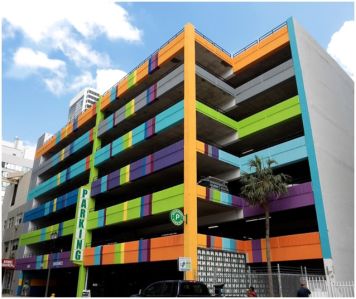![Atlantic Yards Passes State’s Top Court [Updated] aerial viewa 3 Atlantic Yards Passes State’s Top Court [Updated]](http://observer-media.go-vip.net/wp-content/uploads/sites/3/2011/06/aerial-viewa_3.jpg?w=300&h=212) More than three years after a legal battle over property takings in Brooklyn began, it’s now come to a close.
More than three years after a legal battle over property takings in Brooklyn began, it’s now come to a close.
New York’s highest court issued a ruling Tuesday morning that upholds the state’s use of eminent domain in the $4.9 billion Atlantic Yards project, planned home of 15 apartment towers and a new basketball arena for the Nets.
Now the state, at the request of the project’s developer, Forest City Ratner, is likely to move forward on acquiring the property of the holdout landowners and tenants, a relatively small handful of individuals who have been waging this legal fight since 2006. The takings, and the project as a whole, depend on Forest City hit Dec. 31 deadline to get financing for the arena.
The 6-1 decision by the Court of Appeals, written by Chief Judge Jonathan Lippman, found that the state was indeed within its rights to use eminent domain, as the threshold for “blight” in the area being taken–a few blocks in Prospect Heights that, generally speaking, do not look blighted by the common use of the word–allows it.
“The Constitution accords government broad power to take and clear substandard and insanitary areas for redevelopment,” Mr. Lippman wrote. “In so doing, it commensurately deprives the Judiciary of grounds to interfere with the exercise.”
New York is one of just a handful of states that did not add restrictions to the use of eminent domain after the Kelo v. New London case of 2005. That case has made the news once again recently, as Pfizer, which built a facility in New London, Ct. that helped spur the city’s use of eminent domain, is pulling out of the area. A large development site near the drug giant’s facility still sits vacant.
The landowners and tenants on the suit began the case in federal court in October 2006, appealing it up to the U.S. Supreme Court–which declined to hear the case–and then they brought the case in state court, first at the appellate level, and then to the Court of Appeals. They have lost every challenge.
“Our commitment to the entire project is as strong today as when we started six years ago,” Forest City chairman Bruce Ratner said in a statement. “Today, however, this project is even more important given the need for jobs and economic development.”
Mr. Ratner faces perhaps a more daunting set of challenges before the year’s end, most of which are financial. He must get about $700 million in bonds for the Nets arena rated by credit agencies, likely this week. He then must find buyers for those bonds, and close on a set of govenrment agreements, all before Dec. 31.
There are also another set of outstanding lawsuits, mostly challenging the re-approval of the project. Earlier this year, Forest City delayed much of the project on account of the economy, and scaled back the size of the arena, dropping architect Frank Gehry, who was used as a key selling point to the public before the project was first approved.
For opponents and critics of large-scale development, the ruling also offers a silver lining. The court’s opinion upheld a rare tactic the opponents took: going first to federal court, then state court. Typically those who challenge eminent domain go only through state court. The landowners here, however, took nearly two years to go through the federal courts, delaying the project all the while. The state argued that the opponents did not even have the right to file in state court after they lost in federal court, as there is a 30-day window after an early condemnation step that had closed. The court, however, ruled that this window stayed open, and the opponents were within their rights to go through both sets of courts, regardless of the delays the steps added to the project.
For those opposing the use of eminent domain, this can now be seen as a viable delay tactic: Many projects collapse on their own over time if the broader economy worsens, so the longer construction is put off, the more likely a failure.
In a concurring opinion, two of the judges acknowledged this, and disagreed with Mr. Lippman’s opinion:
What has happened in this case is precisely the result that the Legislature sought to prevent when it enacted the Eminent Domain Procedure Law – the sidelining of a public project on account of prolonged litigation
…
The majority counters that “serial litigation of condemnation claims has been exceedingly rare” and “[t]here is no reason to suppose that serial condemnation litigation will now become the order of the day” (majority op at 11, 12). The historical observation is accurate; the prediction may turn out to be so much judicial whistling in the dark. After all, we have now opened up and exposed for all to see a whole new strategy for determined foes of a public project to exploit.
ebrown@observer.com


